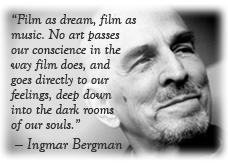The Life of Oharu (Criterion Collection) [Blu-ray]
Product Description
Kenji Mizoguchi's The Life of Oharu is one of the most tragic female stories ever presented within the cinema. Mizoguchi uses the experiences of a struggling courtesan to examine the issues of sex, class, and rigid feudal hierarchy in Japanese society during the Edo period. Unfortunately for the protagonist Oharu, things turn out badly for any social role she chooses to assume herself in, whether its court lady, concubine, courtesan, wife, nun, or common prostitute; Oharu can never catch a break under feudal, mercantile, and patriarchal rule. I love Japanese cinema especially the works of Akira Kurosawa, Yasujiro Ozu and the great and most underrated of the three, Kenji Mizoguchi. The young French critics of the Cahiers du cinema were crazy about his work, and they thought Mizoguchi was not only the greatest of Japanese masters, but high in the ranks of the greatest filmmakers who have ever practiced the art.
Manufacturer Description
Product Information
Some critics have questioned director Kenji Mitzoguchi’s feminism, as many have speculated that he harbored feelings of guilt regarding women and sought their forgiveness through the messages of his films. However that may be, he was a critic of male hierarchy and Japanese society, whose wrongs were for him most evident in the wrongs done to women. Mizoguchi made the subject of prostitution into a frequent theme throughout his work such as in Streets of Shame, Ugetsu, and Sansho the Bailiff, and it has been claimed that The Life of Oharu was one of Mizoguchi's favorite projects, probably because it drew from roots in his own life. Mizoguchi was known to frequent brothels, not simply to purchase favors, but to socialize with their workers. These brothels made a great impression on the director, and that even his own sister Suzo, who raised him, was ultimately sold by their father as a geisha, which frightfully mirrors the tragic fate of the main protagonist in the film
Key Product Details
- Director: Kenji Mizoguchi
- Number Of Discs: 1
- Run Time: 137 (Minutes)
- UPC: 715515107310

![The Life of Oharu (Criterion Collection) [Blu-ray]](https://images-na.ssl-images-amazon.com/images/I/419yT-Zi%2BiL.01_SL400_.jpg)
![The Life of Oharu (Criterion Collection) [Blu-ray]](https://images-na.ssl-images-amazon.com/images/I/51%2BCJqD-MqL.01_SL50_.jpg)
![The Life of Oharu (Criterion Collection) [Blu-ray]](https://images-na.ssl-images-amazon.com/images/I/31XHMRrLJfL.01_SL50_.jpg)
![The Life of Oharu (Criterion Collection) [Blu-ray]](https://images-na.ssl-images-amazon.com/images/I/51co7EgEc2L.01_SL50_.jpg)

![Sansho the Bailiff (Criterion Collection) [Blu-ray] Sansho the Bailiff (Criterion Collection) [Blu-ray]](https://images-na.ssl-images-amazon.com/images/I/41JY3PsPfHL.01_SL120_.jpg)
![The Mizoguchi Collection - 4-DVD Box Set ( Naniwa hika / Gion no shimai / Zangiku monogatari / Utamaro o meguru gonin no onna ) ( Osaka Elegy / S [ NON-USA FORMAT, PAL, Reg.2 Import - United Kingdom ] The Mizoguchi Collection - 4-DVD Box Set ( Naniwa hika / Gion no shimai / Zangiku monogatari / Utamaro o meguru gonin no onna ) ( Osaka Elegy / S [ NON-USA FORMAT, PAL, Reg.2 Import - United Kingdom ]](https://images-na.ssl-images-amazon.com/images/I/518HG8B%2BkhL.01_SL120_.jpg)
![A Story from Chikamatsu / The Woman in the Rumor (Chikamatsu monogatari / Uwasa no onna) [Region 2] A Story from Chikamatsu / The Woman in the Rumor (Chikamatsu monogatari / Uwasa no onna) [Region 2]](https://images-na.ssl-images-amazon.com/images/I/41agQfIc13L.01_SL120_.jpg)

![The Story of the Last Chrysanthemum [VHS] The Story of the Last Chrysanthemum [VHS]](https://images-na.ssl-images-amazon.com/images/I/51SZXV0R2HL.01_SL120_.jpg)

